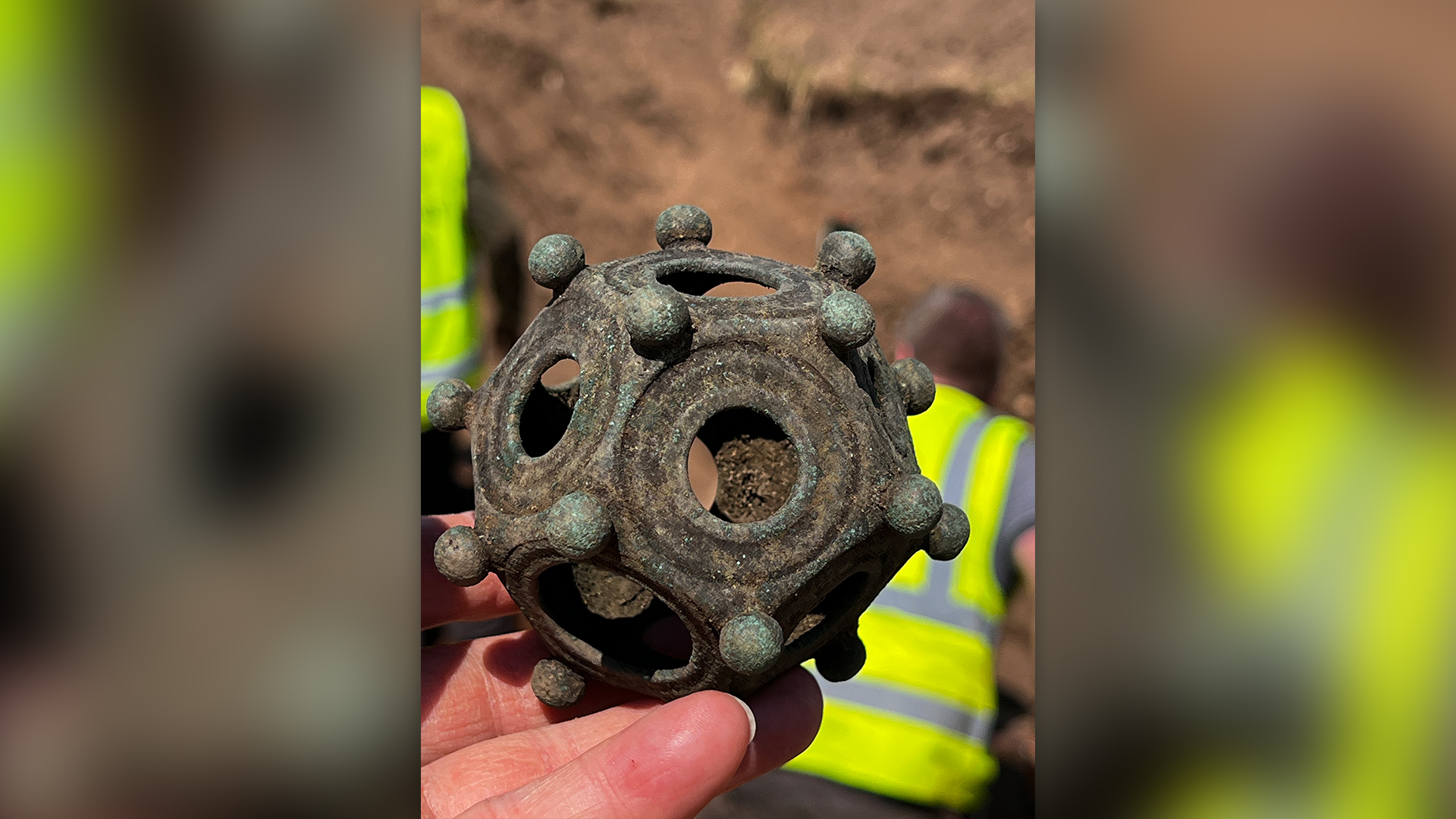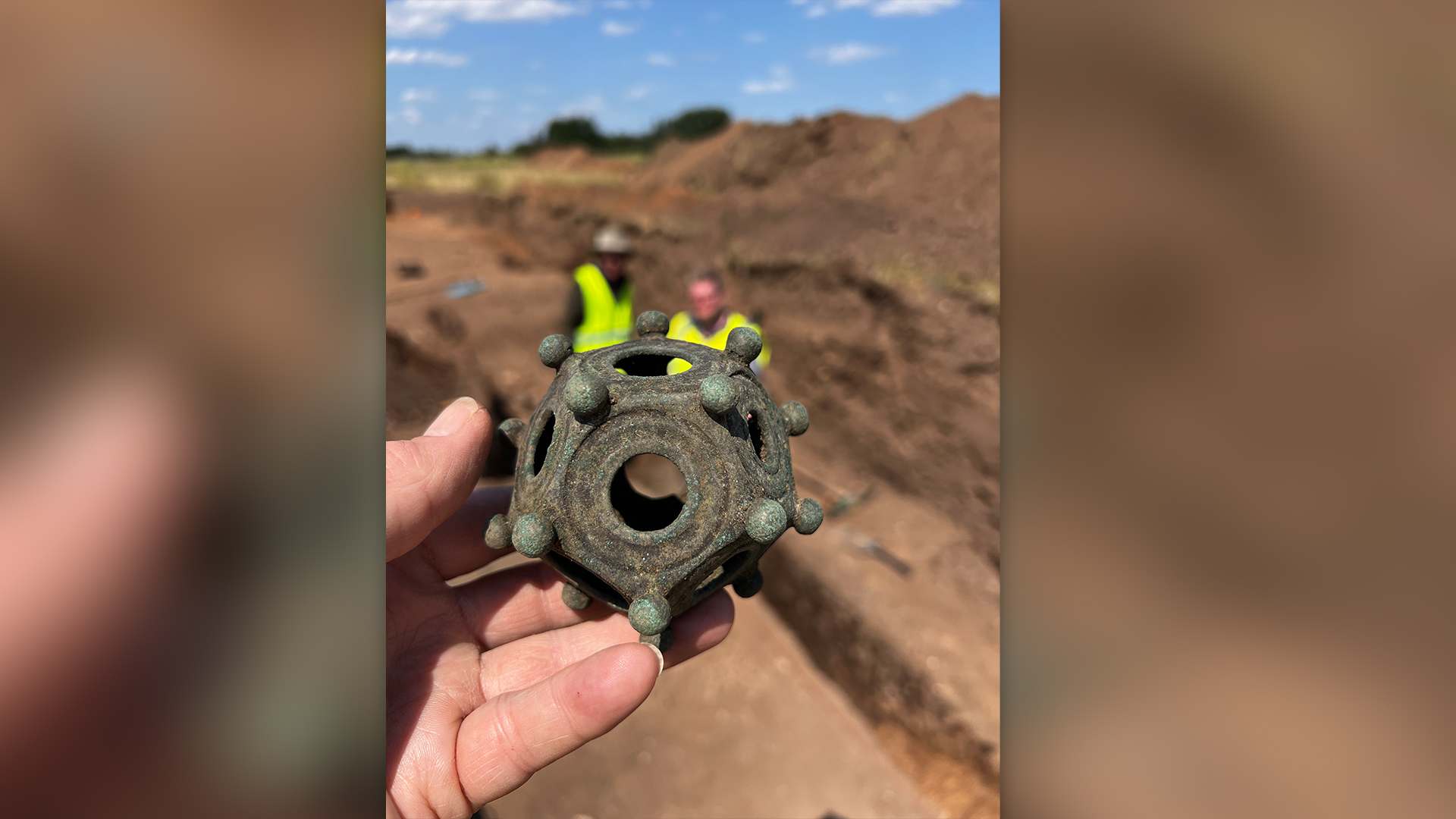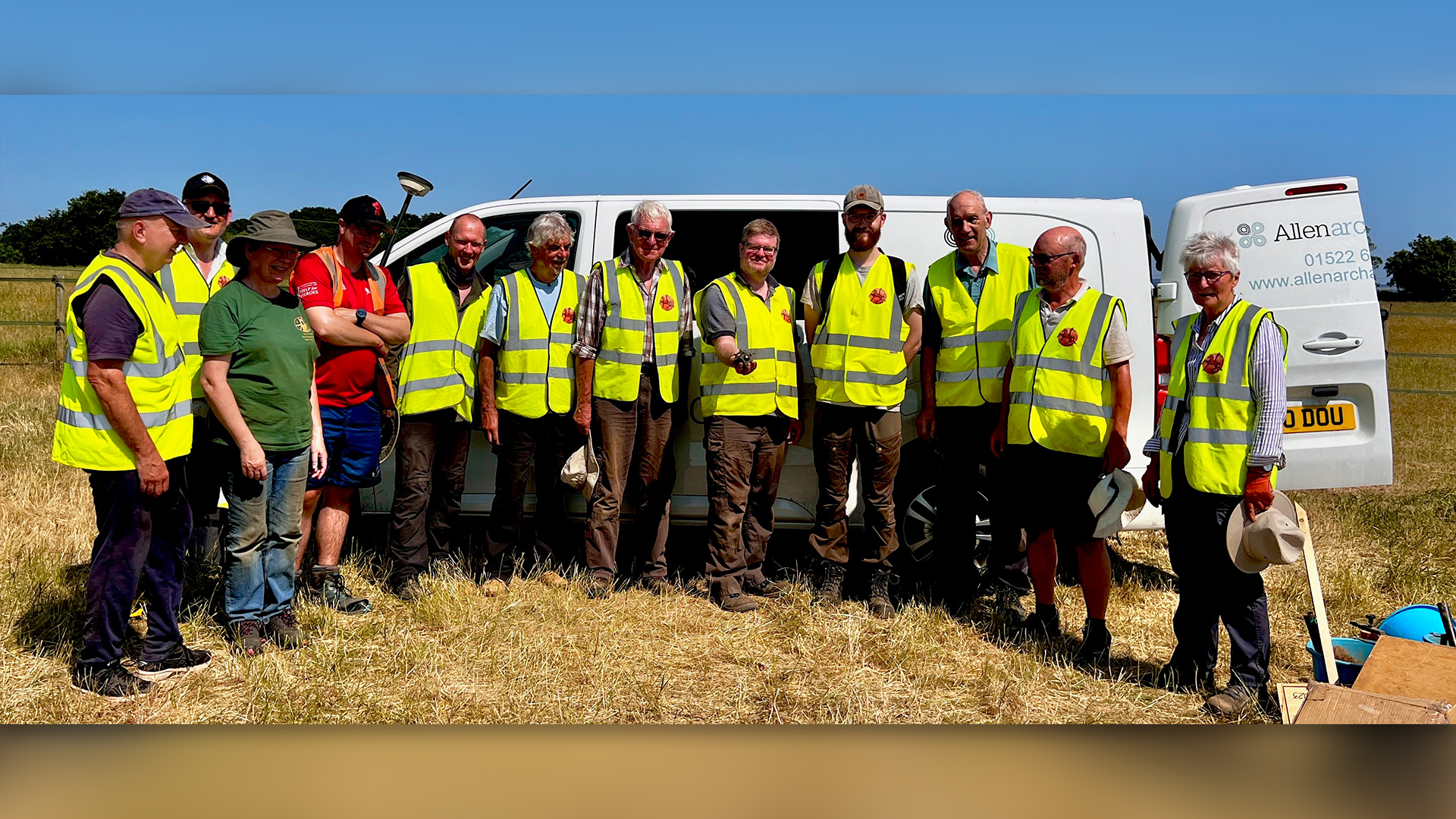
Amateur archaeologists in England have unearthed a stunning Roman dodecahedron — a mysterious class of objects that has baffled experts for centuries.
The dodecahedron — a 12-sided metal shell about the size of a grapefruit — was found this past summer during a dig in a farmer's field near the Lincolnshire village of Norton Disney, located about 35 miles (56 kilometers) southeast of Sheffield.
A previous geophysical survey, which had detected underground areas where the Earth's magnetic field had been disturbed, had revealed what looked like a buried pit at the site, and metal detectorists had already found Roman coins and broaches in the same field, said Richard Parker, the secretary of the Norton Disney History and Archaeology Group, an organization of local volunteers.
Parker was making a cup of tea nearby when a shout went up from some of the volunteers, who'd just unearthed the dodecahedron in one of the trenches the group made at the site for the two-week dig.
"It was our second-to-last day of the excavation, and up pops this dodecahedron in Trench Four," Parker told Live Science. "We were completely surprised by it. We weren't getting many metal [signals] at that point, but all of a sudden there it was."
The object is complete, whereas many others that have been discovered are badly damaged or fragmented. It's also large for a Roman dodecahedron, which can be as small as a golf ball.
The remarkable metal shell is now on display in a nearby museum, and it was recently featured on "Digging for Britain," an archaeological television show on the BBC.
Mystery object

More than 100 dodecahedrons have been found throughout northwestern Europe over the past 200 years.
These objects date from between the first and the third centuries A.D. and they have only been found in former northern territories of the Roman Empire. They're sometimes called "Gallo-Roman" dodecahedrons, after the Gauls (or Celts) who lived in these areas.
Each dodecahedron is a 12-sided hollow shell of metal, usually bronze, with differently-sized holes in each face; these holes are often surrounded by concentric rings imprinted in the metal, and there is a stud at each corner where the 12 faces meet.
But they bear no writing of any kind, and no description of the dodecahedrons has ever been found in Roman writings. As a result, modern archaeologists are at a loss to explain what they might have been used for. Some have proposed that the dodecahedrons were toys, dice, the heads of maces, sling stones, or range-finding devices for Roman artillery. Additional theories on the internet range from their being devices for calculating dates from stars to serving as knitting patterns for Roman gloves.
But the objects are much too intricate to have been weapons, and none of the other explanations have been satisfactory. Many archaeologists now think the dodecahedrons had a religious or cultic use in the Gallo-Roman regions where they are found — they may have been used for fortune-telling, for example, or for sorcery. A few have been found in graves, which strengthens the idea that they were supposed to be magical; and Roman law prohibited most magic, which may be why nothing was written about them.
Roman rule
The recent discovery at Norton Disney is one of the few times that a Roman dodecahedron has been found in its archaeological context, Parker said. Many others had been unearthed by metal detectorists and turned in later, far away from where they were found.

Although the dig had to close for the season on the day following the dodecahedron's discovery, the group hopes to get more funding and return to the site this upcoming summer, he said.
So far, archaeologists have found Iron Age artifacts near the village that predate Roman rule and hundreds of pieces of Roman pottery from the second and third centuries A.D.; and the remains of a Roman villa have also been found near the village, he said.
All of England and Wales became Roman provinces after 43 A.D., when the legions of Emperor Claudius invaded the country — an invasion that had happened in 54 B.C. under his great-great-uncle Julius Caesar didn't take.
Roman rule continued until about A.D. 410, by which time most of the legions had left to defend continental Europe from barbarian invasions and the British were left to fend for themselves.







